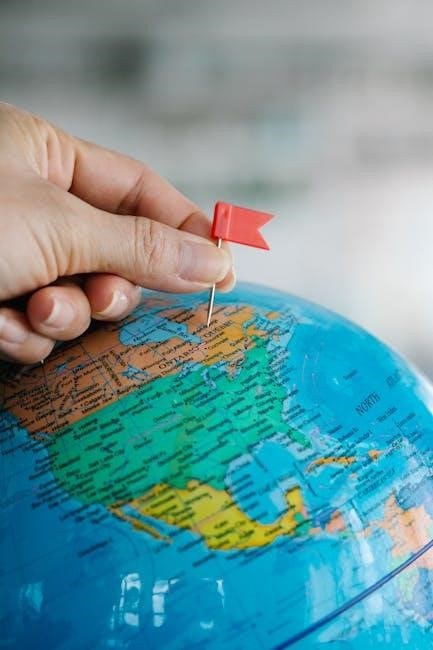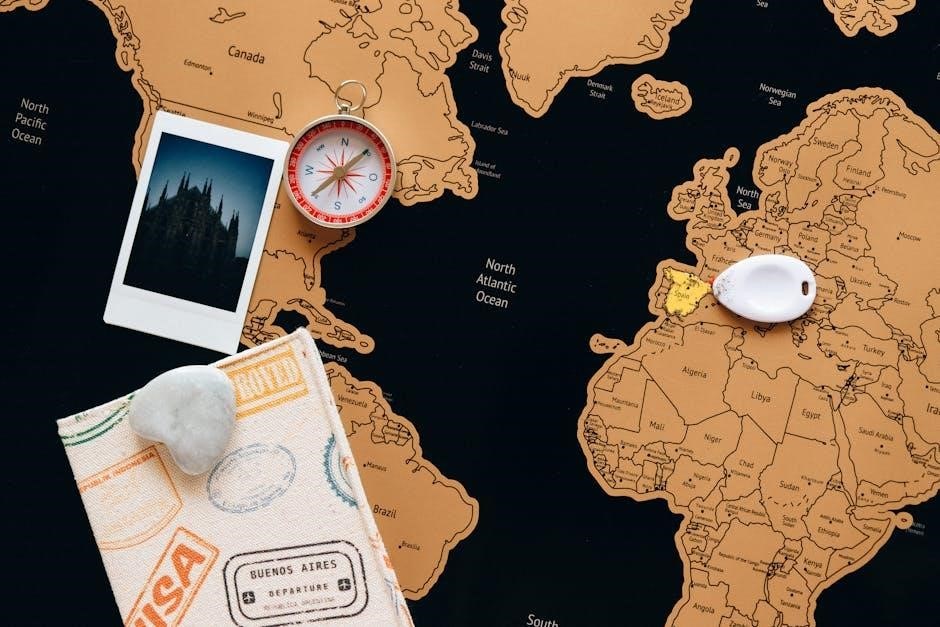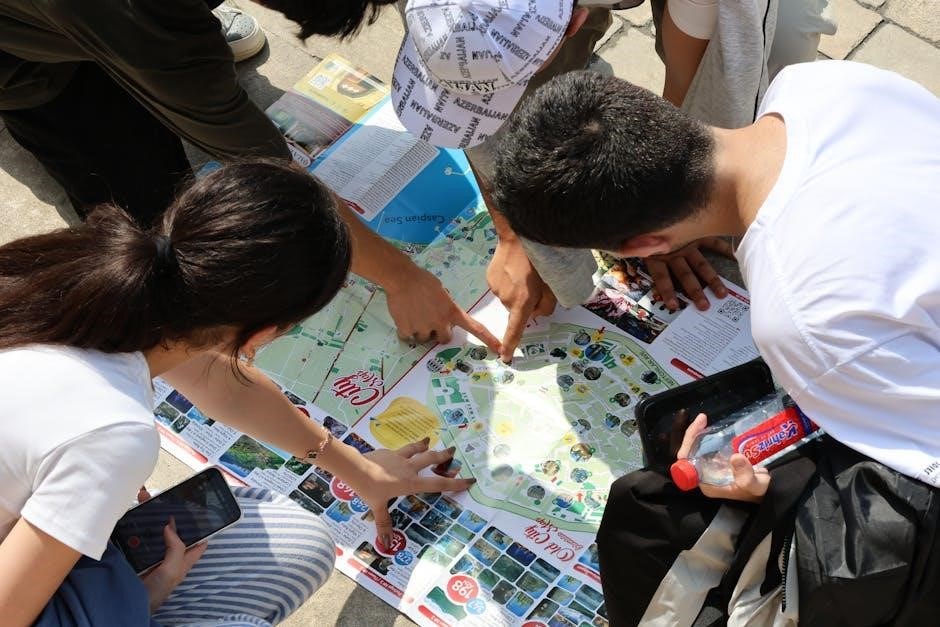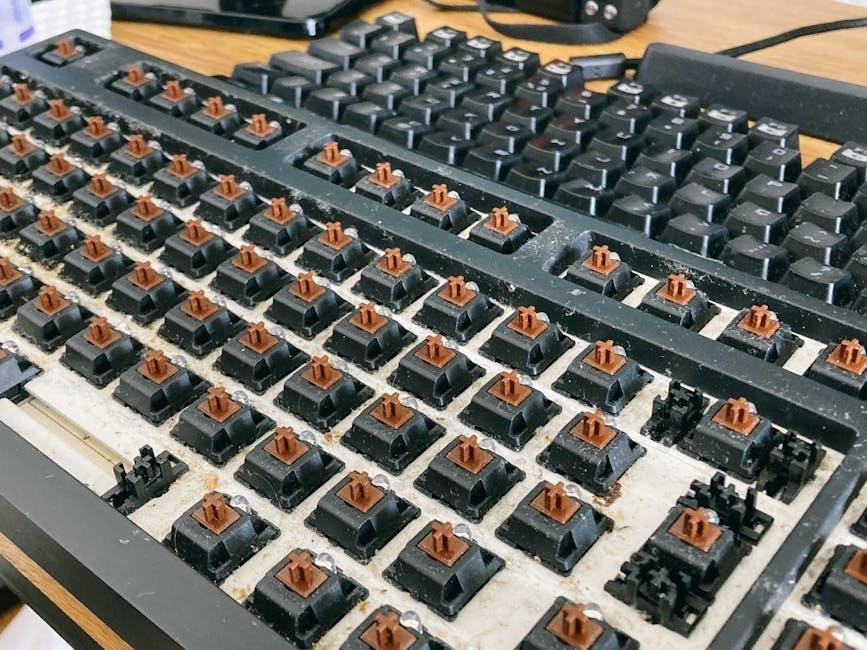Prepping is about being proactive and prepared for emergencies․ It involves stockpiling essentials like food, water, and medical supplies to ensure safety and survival in crises․
1․1․ What is a Prepper?
A prepper is someone who proactively prepares for emergencies, natural disasters, or societal disruptions․ They stockpile essential items like food, water, and medical supplies to ensure survival․ Preppers aim to protect themselves and their families by being self-sufficient․ They often focus on off-grid living, shelter, and security․ Carrie, a doomsday prepper, revealed essential items for survival, while Jane Bari transformed her life through prepping․ Preppers like Carrie and Jane emphasize the importance of readiness․ They believe in being prepared for the unexpected, ensuring safety and sustainability․ Prepping is not just about stockpiling; it’s about creating a plan for long-term survival․
1․2․ Why Should You Consider Prepping?
Prepping offers peace of mind and a proactive approach to life’s uncertainties․ By stockpiling essentials like food, water, and medical supplies, you ensure safety and survival in crises․ Natural disasters, economic collapse, or societal disruptions can strike unexpectedly, making prepping a vital strategy․ Jane Bari transformed her life through prepping, highlighting its practical benefits․ The Preppers Long-Term Survival Guide 2023 provides comprehensive tactics and gear recommendations, helping you sustain yourself for years․ Prepping isn’t just for extreme scenarios; it’s about being ready for everyday emergencies, ensuring your family’s well-being․ With the right knowledge and supplies, you can navigate challenges confidently, protecting your loved ones and securing your future․ Prepping is a responsible choice for anyone seeking self-sufficiency and resilience․

Essential Items for a Prepper’s Survival Kit
A prepper’s survival kit should include water purification systems, non-perishable food, first aid supplies, and reliable communication tools․ These items ensure basic needs are met during crises․
2․1․ Water Storage and Purification
Water is essential for survival, making storage and purification critical․ Preppers should store at least one gallon per person per day for drinking, cooking, and hygiene․ Food-grade containers are ideal for storage, and they should be kept in a cool, dark place․ For purification, methods like filtration, chemical treatment, or boiling are effective․ Portable filters, such as LifeStraw, and purification tablets are popular choices for their convenience․ Regularly rotating stored water and maintaining equipment ensures reliability․ These strategies guarantee access to clean water, a vital resource during emergencies or off-grid living situations․ Proper planning prevents shortages and keeps you and your family safe․
2․2․ Food Stockpiling and Long-Term Storage
Stockpiling non-perishable food is vital for long-term survival․ Focus on high-calorie, nutrient-rich items like dried grains, legumes, and canned goods․ Store food in a cool, dry place to preserve quality and longevity․ Use airtight containers to protect against pests and moisture․ Rotate your stock regularly to ensure older items are consumed before expiring․ Consider freeze-dried meals for extended shelf life․ Plan for at least one year of supplies per person, adjusting for dietary needs and preferences․ Organize food by expiration dates to maintain a usable stockpile․ Always check expiration dates and replace items as needed․ Proper storage and rotation ensure your food remains safe and edible during emergencies․

Shelter and Protection
Secure shelter protects against harsh weather, predators, and threats․ Choose durable materials like wood, metal, or earth for construction․ Ensure proper ventilation and insulation for comfort․
3․1․ Types of Shelters for Different Environments
Different environments require tailored shelter solutions․ In urban settings, abandoned buildings or underground bunkers can provide safety․ For wilderness survival, tents, lean-tos, or debris huts are ideal․ Desert environments may necessitate burrows or sandbag structures to shield from extreme heat and sandstorms․ In cold climates, insulated snow shelters or quinzhees are effective․ Portable options like yurts or inflatable shelters offer versatility․ Always consider durability, camouflage, and proximity to resources when selecting or building a shelter․ Natural materials like branches, leaves, and snow can blend seamlessly into surroundings, enhancing security․ Preppers should practice constructing shelters in various conditions to ensure adaptability during crises․
3․2․ Building and Fortifying Your Shelter
Building and fortifying your shelter is crucial for survival․ Start by selecting durable materials like wood, metal, or reinforced plastic․ Reinforce walls with sandbags or concrete for added strength․ Install a sturdy roof to protect against weather and debris․ Consider adding layers of insulation to regulate temperature․ Secure doors with heavy-duty locks or barricades․ Camouflage your shelter to avoid detection, using natural materials like leaves or branches․ Ensure proper ventilation to maintain air quality․ Incorporate escape routes or hidden compartments for emergencies․ Regularly inspect and maintain your shelter to address vulnerabilities․ Fortification should balance practicality, durability, and adaptability to withstand various threats and conditions․

Security and Self-Defense
Secure your surroundings with strategic planning and essential tools․ Master self-defense techniques and stay vigilant to potential threats․ A well-prepared defense ensures safety and peace of mind․
4․1․ Personal Safety and Security Planning
Personal safety and security planning are critical for preppers․ Start by identifying potential threats and vulnerabilities in your environment․ Develop a comprehensive security plan that includes protocols for home defense, travel, and public settings․ Establish a safe perimeter around your shelter and designate a secure room for emergencies․ Conduct regular drills to ensure readiness and awareness․ Incorporate self-defense training to handle physical confrontations effectively․ Stay informed about local risks and adapt your strategies accordingly․ Prioritize situational awareness and avoid drawing unnecessary attention to your preparations․ A well-thought-out safety plan enhances your ability to protect yourself and your loved ones during crises․
4․2․ Essential Weapons and Tools for Self-Defense
Essential weapons and tools for self-defense are vital for a prepper’s security plan․ Firearms, such as handguns and rifles, are popular choices for their versatility and stopping power․ Always ensure proper training and adherence to local laws․ Non-lethal options like pepper spray, stun guns, and batons provide alternatives for de-escalation․ Knives, both fixed-blade and folding, are practical for close-quarters defense․ Consider adding defensive gear like body armor for enhanced protection․ Tools like flashlights and whistles can also serve as deterrents․ Remember, weapons are a last resort; prioritize avoidance and situational awareness․ Store all tools securely and maintain them regularly for reliability․ Legal compliance is crucial to avoid unintended consequences․

First Aid and Medical Preparedness
A well-stocked first aid kit and medical knowledge are crucial for treating injuries and preventing infections in emergency situations․ Always include supplies for wound cleaning, pain management, and basic life support․
5․1․ Building a Comprehensive First Aid Kit
A well-organized first aid kit is essential for addressing injuries and preventing infections․ Include bandages, antiseptics, gloves, and scissors․ Add pain relievers, antihistamines, and medications for specific allergies․ Incorporate supplies for burns, blisters, and fractures, such as burn gel and splints․ Don’t forget a first aid manual and a tourniquet for severe bleeding․ Store items in a portable, durable container and check expiration dates regularly․ Tailor the kit to your family’s needs, including personal protective equipment like masks and gloves․ A comprehensive kit ensures readiness for minor to life-threatening emergencies, providing peace of mind and immediate care when professional help is unavailable․
5․2․ Basic and Advanced Medical Skills for Emergencies
Mastering basic and advanced medical skills is crucial for emergency preparedness․ Start with fundamentals like wound cleaning, bandaging, and applying tourniquets․ Learn to recognize and treat shock, bleeding, and burns․ Advanced skills include suturing, fracture management, and administering basic medications․ Understand how to use medical tools like splints and chest seals․ Practice these techniques regularly to build confidence․ Consider enrolling in first aid or wilderness medicine courses for hands-on training․ Stay informed about updates in emergency care and adapt your skills accordingly․ Knowing when to act and when to seek professional help can save lives․ These skills are invaluable in crises where medical assistance may be delayed or unavailable․

Communication Strategies
Effective communication is vital during emergencies․ Ensure reliable methods like two-way radios, satellite phones, and backup systems are in place to maintain connections and coordinate actions efficiently․
6․1․ Reliable Communication Devices for Emergencies
Reliable communication devices are critical for staying connected during crises․ Two-way radios, such as handheld models or mobile units, offer portable and long-range communication․ Satellite phones are ideal for areas without cellular service, ensuring connectivity in remote locations․ Ham radios provide a community-based communication network, requiring a license but offering extensive reach․ Solar-powered or battery-operated devices are essential for off-grid scenarios․ Additionally, consider a whistle for signaling when electronic devices fail․ Encrypting messages can enhance security․ Always test devices regularly to ensure functionality․ A reliable communication setup ensures you can call for help, coordinate with family, and receive vital updates during emergencies․ Invest in durable, versatile options to stay informed and connected․
6․2․ Setting Up a Communication Network
Setting up a communication network is vital for maintaining contact with family and allies during emergencies․ Designate a primary contact person and establish a central meeting point․ Use a combination of devices like two-way radios, ham radios, and satellite phones to ensure redundancy․ Create a communication protocol, including check-in times and codes for secure messaging․ Assign roles within the network to avoid confusion․ Regularly test the system to identify and fix weaknesses․ Consider backup power sources for equipment․ Store spare batteries and antennas in your survival kit․ Practice drills to ensure everyone understands their role․ A well-organized network enhances coordination and mutual support, keeping you connected when it matters most․

Power and Energy Solutions
Power and energy solutions are crucial for preppers, ensuring access to electricity during outages․ Solar panels, generators, and energy storage systems provide reliable backup power․ Invest in energy-efficient appliances and conserve fuel․ Regularly maintain equipment to ensure functionality․ Plan for alternative energy sources like wind or hydro power․ Store extra fuel and batteries․ Consider portable options for mobility․ A well-prepared energy plan keeps essential systems running, safeguarding health, communication, and safety during crises․
7․1․ Alternative Energy Sources for Off-Grid Living
Alternative energy sources are vital for off-grid living, providing sustainable power without reliance on public utilities․ Solar power is a popular choice, using photovoltaic panels to harness sunlight and store energy in deep-cycle batteries․ Wind energy, via small turbines, is effective in areas with consistent airflow․ Hydro power, such as micro-hydro systems, can be used in locations with flowing water․ Geothermal energy, though less common, leverages underground heat for heating and cooling․ These sources reduce dependency on fossil fuels and ensure a steady energy supply during crises․ Assessing your location’s resources is key to choosing the most efficient system․ Regular maintenance and energy storage solutions, like inverters, are essential for reliability․
7․2․ Backup Power Systems and Generators
Backup power systems and generators are critical for maintaining electricity during outages․ Portable generators are versatile and cost-effective, ideal for short-term use, while standby generators offer automatic, long-term power solutions․ Solar-powered generators combine renewable energy with battery storage, providing eco-friendly backup․ When selecting a generator, consider your power needs, fuel availability, and noise levels․ Proper installation, regular maintenance, and safety precautions, like carbon monoxide detectors, are essential․ Battery backup systems, such as deep-cycle batteries with inverters, store excess energy for later use․ These systems ensure lights, communication devices, and medical equipment remain operational․ Investing in a reliable backup power system enhances your ability to withstand extended grid failures and maintain comfort during crises․
Legal and Financial Preparedness
Secure your legal and financial stability by planning for emergencies․ Ensure proper estate planning, insurance coverage, and accessible emergency funds to safeguard your assets and family during crises․
8․1․ Understanding Legal Aspects of Prepping
Understanding the legal aspects of prepping is crucial to avoid legal issues during emergencies․ Familiarize yourself with local, state, and federal laws regarding self-defense, weapons, and emergency protocols․ Property rights, zoning laws, and regulations on off-grid living are essential considerations․ Know your rights and obligations to ensure compliance and avoid legal conflicts․ Additionally, understand legal documentation, such as wills, powers of attorney, and trusts, to protect your assets and family․ Legal preparedness ensures you can operate within the law while safeguarding your survival plans and resources․ Stay informed about changing regulations and consult legal experts to stay compliant and prepared․
8․2․ Financial Strategies for Emergency Preparedness
Financial preparedness is vital for long-term survival and stability․ Start by building an emergency fund to cover at least six months of living expenses․ Implement a budget that prioritizes essential items like food, water, and medical supplies․ Reduce debt to minimize financial vulnerability during crises․ Consider investing in tangible assets, such as precious metals or land, for long-term security․ Establish a bartering system or alternative currency options for post-disaster scenarios․ Ensure proper insurance coverage for your home and prepping supplies․ Finally, create a financial plan that balances immediate needs with long-term sustainability․ These strategies will help you navigate economic challenges and safeguard your resources during emergencies․

Mental and Emotional Preparedness
Mental resilience and emotional stability are critical for survival․ Techniques like mindfulness and positive thinking help maintain focus during crises․ Building a strong support network enhances coping abilities and overall well-being․
9․1․ Building Mental Resilience for Crisis Situations
Developing mental resilience is essential for navigating crises effectively․ Techniques such as mindfulness, positive thinking, and cognitive restructuring can help preppers stay calm under pressure․ Practicing emotional awareness allows individuals to recognize and manage stress, fostering clearer decision-making․ Regular mental exercises, like meditation and visualization, strengthen psychological endurance․ Engaging in physical fitness also enhances mental stamina, as a healthy body supports a resilient mind․ Building a growth mindset encourages adaptability and problem-solving skills, which are critical in unpredictable situations․ Cultivating social connections and community support further bolsters mental strength, ensuring preppers can face challenges with confidence and determination․ These strategies collectively prepare individuals to remain composed and focused during emergencies․
9․2․ Managing Stress and Anxiety in Survival Scenarios
Managing stress and anxiety is crucial during survival situations to maintain clarity and focus․ Techniques like deep breathing exercises, grounding methods, and mindfulness can help calm the mind․ Prioritizing tasks and setting achievable goals reduces feelings of overwhelm․ Staying hydrated, well-fed, and rested is vital, as physical fatigue exacerbates stress․ Establishing a routine provides structure and normalcy, even in chaotic environments․ Connecting with others, whether through brief conversations or shared activities, fosters emotional support․ Recognizing and accepting limitations helps prevent unrealistic expectations, enabling individuals to focus on what they can control․ These strategies promote emotional stability, allowing preppers to respond effectively to challenges without being paralyzed by anxiety․

Community and Networking
Building strong connections with like-minded individuals enhances survival readiness through shared knowledge, resources, and mutual support, fostering trust and collective strength in challenging situations․
10․1․ Building a Prepper Community
Building a prepper community involves connecting with like-minded individuals who share your commitment to preparedness․ Start by identifying local groups through forums, social media, or meetups․ Establishing trust is crucial, so prioritize transparency and integrity in your interactions․ Host workshops or training sessions to foster collaboration and skill-sharing․ Encourage open communication by creating a dedicated channel for updates and discussions․ A strong community not only provides emotional support but also amplifies your resources and knowledge․ By working together, members can pool expertise, share supplies, and create a network of mutual aid․ This collective strength is invaluable during crises, ensuring a safer and more resilient future for everyone involved․
10․2․ Collaborative Strategies for Mutual Support
Collaborative strategies for mutual support are essential for a thriving prepper community․ Organize skill-sharing workshops to ensure members can learn from each other’s expertise, such as first aid, gardening, or repair skills․ Develop a resource-sharing plan, where members contribute supplies or tools, creating a collective pool for emergencies․ Establish a communication network, like a messaging system or regular check-ins, to keep everyone informed․ Rotate responsibilities, such as security patrols or supply management, to distribute workload and ensure fairness․ Foster trust by setting clear expectations and confidentiality agreements․ Encourage joint training exercises to practice teamwork and emergency responses; By working together, the community becomes more resilient, capable of overcoming challenges that might overwhelm individuals․ Mutual support strengthens bonds and enhances readiness for any crisis․

Staying Informed and Adapting
Stay informed about emerging threats and adapt strategies to remain effective․ Monitor reliable news sources, weather reports, and emergency alerts to anticipate challenges․ Regularly update supplies and plans based on new information to ensure preparedness for evolving scenarios․ Adaptation is key to long-term survival and resilience in a changing world․
11․1․ Sources of Reliable Information for Preppers
Reliable information is crucial for effective prepping․ Government websites like NOAA (weather alerts) and FEMA (emergency guidelines) provide trusted data․ Non-governmental organizations such as the American Red Cross and CDC offer practical survival and health tips․ Survival forums, prepper communities, and trusted blogs share real-time updates and personal experiences․ Local news and emergency alerts ensure region-specific preparedness․ Books by survival experts provide in-depth strategies․ Always cross-verify information to avoid misinformation․ Staying informed through diverse, credible sources enhances preparedness and adaptability in crises․ Regularly update your knowledge to stay ahead of potential threats and ensure your strategies remain effective․
11․2․ Adapting Your Prepping Strategy to New Threats
Adapting your prepping strategy to new threats is essential for long-term survival․ Start by regularly assessing emerging risks, such as climate change, pandemics, or geopolitical instability․ Re-evaluate your supplies and skills to ensure they align with current threats․ Stay flexible by creating contingency plans for different scenarios․ Incorporate new technologies, such as solar-powered gear or advanced water filtration systems, to enhance preparedness․ Engage in continuous learning by attending workshops or online courses to stay updated on best practices․ Lastly, remain proactive by monitoring global trends and adjusting your strategy accordingly․ Adaptability ensures your prepping efforts remain relevant and effective in the face of evolving challenges․
Preparedness ensures survival and resilience in crises․ A comprehensive approach and proactive mindset are key․ Stay vigilant, adapt, and thrive․ Always ready for the future․
12․1․ Final Thoughts on Prepping
Prepping is a lifestyle centered on readiness and resilience․ It empowers individuals to face uncertainties with confidence․ By building a well-rounded survival kit, securing shelter, and fostering mental strength, preppers ensure their safety and well-being․ The journey requires continuous learning, adaptability, and a proactive mindset․ Collaboration with like-minded communities enhances preparedness and provides mutual support․ Remember, prepping is not about fear but about responsibility and the determination to protect oneself and loved ones․ Stay informed, stay vigilant, and always be ready to adapt to changing circumstances․ The time to prepare is now—tomorrow may be too late․ Embrace the prepper mindset and secure your future․
12․2․ Encouragement to Start Your Prepping Journey
Starting your prepping journey is a proactive step toward safeguarding your future; It’s about taking control of your safety and well-being, no matter what life throws your way․ Prepping isn’t just for extreme scenarios—it’s for anyone who wants to be ready for life’s unexpected challenges․ Begin with small, achievable steps, like stockpiling essentials such as water, food, and a first aid kit․ As you progress, you’ll build confidence and peace of mind․ Remember, prepping is a journey, not a destination․ Every effort you make today is an investment in your tomorrow․ Don’t wait—start now, and take the first step toward a more secure and resilient future․



